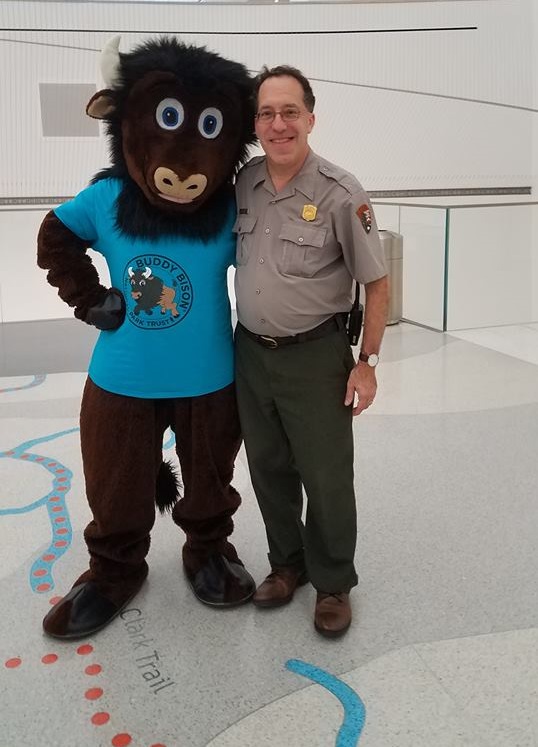
I am Ranger Richard, and I am Gateway Arch National Park’s Sky Ranger. I am old enough to remember the Apollo Moon landings, and they got me interested in astronomy and space exploration. I love history as much as I do the stars, and began my career as a Park Ranger here back in 1988.
In 2009, the Park sent me to a special workshop for Sky Rangers that was held at Bryce Canyon in Utah, and the rest, you might say, is written in the stars. Our Park’s Gateway to the Stars program begin in 2010, and consists of monthly astronomy or National Park-themed talks followed by telescope viewing, held near the Arch Entrance. This year, programs were held from April 28- October 20, so we are taking a break for the winter- we plan to resume in May. You can still “Keep on looking up” as stargazer Jack Horkheimer used to say. This monthly blog will help you do that!
NOVEMBER HIGHLIGHT: VENUS VAULTS INTO THE MORNING SKY
Almost everyone has seen Venus many times. Being closer to the sun than the Earth is and having a cloudy atmosphere, it reflects light very well, and is usually seen as a brilliant “evening star” in the west after sunset or a “morning star” in the east before sunrise. For the last few weeks, Venus has been hard to see, passing between the Earth and Sun, but it is about to make a grand entrance into our skies. With sunrise taking place between 6:30-7 am during most of November, you don’t really have to get up all that early to see Venus at this time of year.
At the very beginning of November, Venus is still very low in the east to southeast as dawn brightens, but as early as the 4th, it rises an hour before the sun, and should be easy to spot if you can find an open view in that direction. By November 12th, Venus rises two hours before the sun, and by late November more than three hours, a brilliant “star” lighting up the dawn. If it is a very clear morning, you may be able to follow Venus after the sun rises!
Having recently passed between the Earth and the Sun, Venus is currently displaying most of its unlit side towards us, with only a sliver of a crescent visible. If you can get ahold of good binoculars or a small telescope, this crescent phase of Venus is easy to see. Galileo’s observation of Venus’ phase in the seventeenth century helped confirm that the planets revolve around the Sun and not the Earth.
